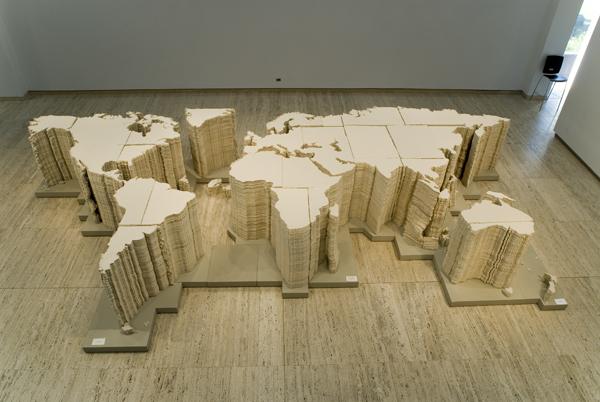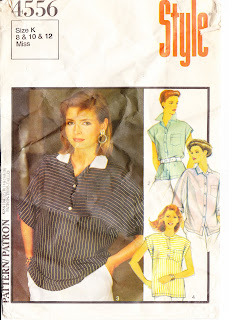






POST SIXTEEN: LETS GET DEFINITIVE, DEFINITIVE, LETS GET DEFINITIVE
Honing down on these three questions now:
DEFINITIONS:
DICTIONARY: the action of wearing or carrying on the person (an article of clothing, an ornament, a watch, sword or the like); the condition or act of being worn or carried upon the person.
WHEREING: Wear is the act of carrying on the person, often a “garment.” It is also the experience of this act. It is the feeling of a personal space being both contained and filled in embodiment. The individual, personal nature of this experience can often feel visceral as maybe sometimes we consider this space to hold us as a person, or our consciousness. When further directing this act we can see the complexities of defining it. I may at times carry many things upon my body, for example a scent when I wear perfume. Or perhaps when I am naked I am really dressed as I am carrying air on my body, I am wearing the space of air around me. Can I wear a room? Is wearing more the idea of comprehending the boundary area of an experience or an object and its space around our body?
DICTIONARY:a custom of style or conventional usage in dress and manner
WHEREING: an act of wearing forms and using this as a way of comprehending the self in the world. This can be done through many different forms, ways and conditions. All associated ephemera and recordings of this are included in the web of fashion and it’s relations.
DICTIONARY: any article of dress, an outer vestment, a gown or cloak, clothes.
WHEREING: This is a hard one! A garment is anything which can encase and bound the body, creating an experience of spatial self for the wearer. Does this include a room, a box, a hedged fence, the inside walls of a volcano etc.? Maybs!
DICTIONARY: the aggregate of surrounding things, conditions, or influences, surroundings
WHEREING: An environment is the surroundings and conditions within a particular place , which has been altered in a way, or designed and somehow made more conspicuous. The nature and experience of the environment is particular to the way in which these impacts, workings and changes have been done.
DICTIONARY: of detailed mapping and charting of relief features or surface configuration of an area
WHEREING: a detailed mapping and charting of relief, depth and undulation surface configuration traditionally applied to an area of land - however maybe it can be applied to an area of embodiment, and to the surface of a garments fabric or materialization. Often when a person visits an environmental landmark of natural monument, (the twelve apostles, the grand canyon etc) they get a type of funny, confronting feeling, of being small in the world, and or existing as a being in vast space. Sometimes I get these feelings when I am getting dressed, or when I meditate on being in my clothes.
DICTIONARY: the unlimited or incalculably great three-dimensional realm or expanse in which all material objects are located and all events occur.
WHEREING: Agreed! I shall now elaborate of a sub-tern to this one: Fashion Space - the consideration of the three-dimensional realm or expanse in which all material objects that are located in and events that are carried out in it, create the notion, feeling and experience of fashion.
DICTIONARY: the act of providing with a body, to give a concrete form to, personify, express, or exemplify in concrete form.
WHEREING: to provide with a body, to give a form in which a person exists. In this context and maybe quite literally a by product of wearing which creates a space with notions of garment/person hybrid existing within its areas.
DICTIONARY: a marking, configuration or design to make fashion
WHEREING: a marking, configuration or design to make fashion. Pattern is documentation of design, construction, cut and fit which informs the overall shape of a garment as designs it’s spatial experience. A means by which to intend a garments encounter through fit with the body.
POST FIFTEEN: X-AXIS PATTERN OF A T-SHIRT
In trying to take an cast of an adult size t-shirt which could then be cut into a stack of sliced pattern templates, I attempted to make another play-dough impression. The play-dough was to heavy as a material to hold the height of form adult proportions, and not stable enough.

The process became a matter of first taking a lot of measurement and photos of the embodied t-shirt on a mannequin. I chronologically started to cut of one layer of what would be a cut through the x-axis of the t-shirt. This ring of jersey was then re-shaped into shape it held when worn. This was placed on drafting paper where I could then trace it. This was done for a total of thirty ascending cut bands of the garment.
I would like to further explore carrying out this process using a 3D scan of a worn t-shirt, with another scan of a body placed inside. The worn space could perhaps then by sliced using a digital program such as rhino. I imagine the outcome would be a lot more accurate, and also it would allow me to explore a number of cutting combinations, which go beyond manual comprehension. Diagonal cuts, curved cuts, spherical and prism cuts, and different combinations of all these.
The cuts of the t-shirt result in three separate but relating forms. The central being the body, the second being embodied space between skin of body and inside wall of fabric, and the third being the all worldly space outside the wall of fabric. The act of wearing frames and posits the comprehension of all these spaces. By cutting up these boundaries and the space within them, a garment can be be given a new experience as a different type of spatial encapsulations and container. By changing the viewpoint and possibly scale of this, the usually felt personal space, can be seen and touched from a new position and view.
In the application of these patterns to an outcome, I have created another type of hanging sculpture. I took the third pattern of the space outside a garment and constructed it in separated layers of calico. It is kind of an object which in a way reverses the materialization of traditional wearing. The space outside the garment is given form in fabric, and the inside space of the garment embodiment line becomes an experiential hollow. The garment has been flipped (like in the double cardigan experiment) so the layer closest to the ground is the neck cut with the layer closest to the ceiling being the cardigan hem cut. The sculpture is interactive in a way similar to that of a garment. It is ‘put on’ and ‘worn’ in that the head goes through the neck hole. Wearing takes place from a different angle meaning the internals of the garment can be viewed. Space usually felt in now seen.
The outside of the form is a type of cube. It kind of looks like filo pastry. It is not recognizable as a cardigan from the outside - only the inside. This is a garment which has no connection or real functioning in how it looks from the outside - which a traditional fashion, commercial or runway garment does. The internals of the cardigan are a nice experience. Each stack of curvilinear edges gives you a faint impression and abstract recognizing of a garment space - the hollow of a sleeve, the gradual curve of a back.
Below are a couple of short videos of the hanging.
Here I have applied the process used in the initial of casting a child’s hooded jacket, to knitted cardigan. After getting this play-dough form, I tried take a pattern of it, using horizontal cuts. Effectively, hopefully, pattern-making in a way on the x-axis.
By tracing the outlines of each slice, I got an image which looks like a bird’s-eye view of the boundary line of worn space.
Each layer stacked on top of one another looks like a topographic map of wearing, showing a kind of embodied relief. I think it could look cool if the stacks were cut in a translucent material and stacked on-top of a light box, revealing connections of each layer. There is a type of undulating landscape of the surface of a worn garment, the body’s moving limbs like tectonic plates.

The shapes were used as layered pattern pieces. Both in the positive and the negative.

The positive/inside pattern cards stacked and placed on the ‘pattern rack’. I like how they seem like a morph between a recognisable garment on a hanger and a stack of hanging pattern-cards.

In taking inspiration from Rachel Whiteread, I have been experimenting with ways of casting embodied forms, or the inside of garments. I initially tried to make a cast of shorts, following on from their previous use. I made these by dipping a pair of kids shorts in plaster, squeezing off some of the excess, and letting it cure. I then tried to push play-dough in them to try and get the form. However this was unsuccessful. The folds were too small to easily ply the play-dough out and the hardened garment didn’t really perform as a mould.
I then just started pushing play-dough straight into a garment. I did this too a kid’s hoodie. I made a mini-torso out of play-dough, dressed it in the hoodie and then pushed the hoodie down into a kind of flattened/embodied form.


I then made a cast of this. I like the cast as a finished object. It would be effective to scale up sections of a garment, and make some kind of walled enclosure or mini room. It is similar to Racheal Whiteread’s casts of the hollows of book spines in a bookcase as shown in Untitled 2000. As these reliefs of book spines suggest a type of phantom suggestion of knowledge and stories, as the cardigan suggests a ghost of a body and it’s experience of worn space.


POST ELEVEN: PATRONEN SCULPTURES
I wanted to further test the pattern-card sculptures using the participation of other people's designs and resulting in the use of pattern cards as materials. Using patterns from other fashion designers provided in PATRONEN, an exhibition/catalogue by MODEMUSEUM.
I took three designers' pattern cards and created small scale sculptures using this documentation.
HUSSEIN CHALAYAN



It’s interesting to contrast the results between the four. For example the one sided curved wall of an Azzedine Alia dress creates a very dirrerent structural envornmnent to that of an intricutly cut Hussein Chalayan Jacket. It’s interesting to see what experiences are retained and left behind in the different between garment fabrication and cardboard material.
POST TEN: HANIGN PATTERNS
These experiments follow on from ideas generated in the participatory aspect of the Personal Ingredient tests, in combination with a re-visitation of some ‘Scarp‘ ideas.
Using an old McCalls pattern of a Kimono sleeve, collared T-shirt. In total the garment had eleven pattern-pieces. I procceded in playing around with different configuratios of the pattern-cards into something possibly wearable. The forms where created with a few questions in mind. Can you make a wearable environment using pattern card? And how do you experience these environments?

The results were a couple of loose configurations of possible forms.


I then applied this process of to the negatives scraps of cardboard, left overs after cutting out the positive pattern pieces.
I think making cardboard scultupres could be a dynamic way in archiving a pattern style. I think a person would feel much more of an experience and understnding of a style when viewing such documentation as modular walls and boundaryies as opposed to a flat 2d stack. I think these kind of relationships between a pattern stack, and a 3-dimensional assembly are really interesting.